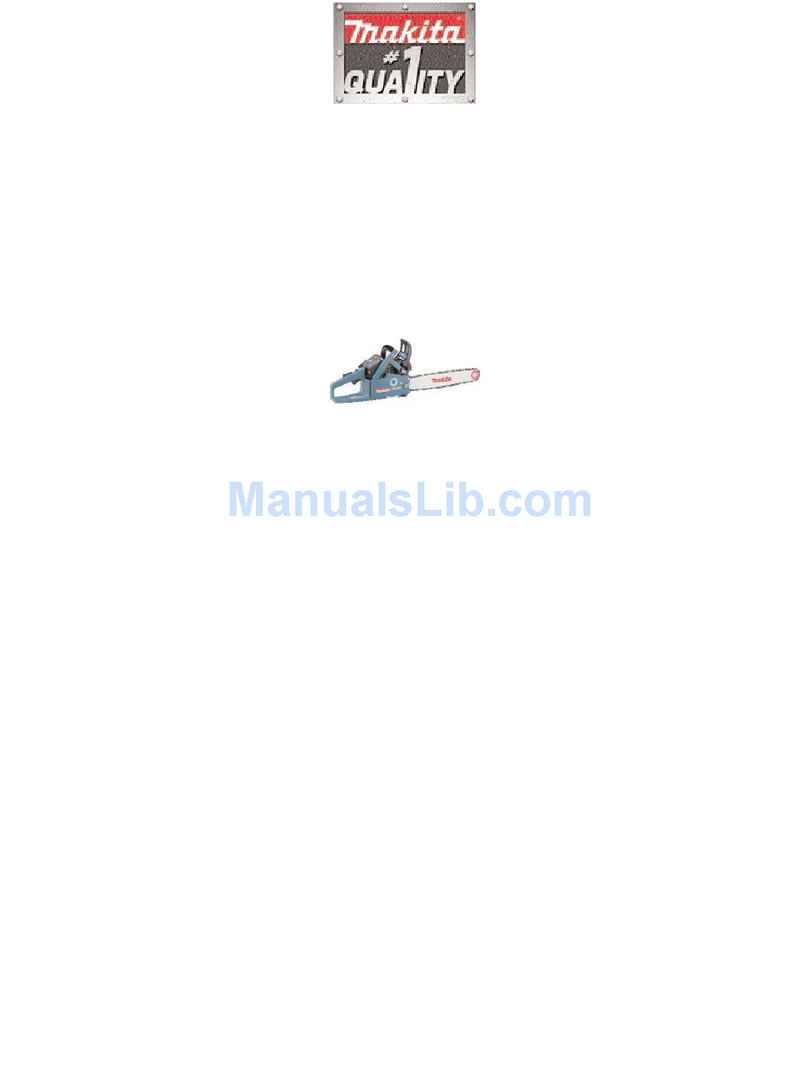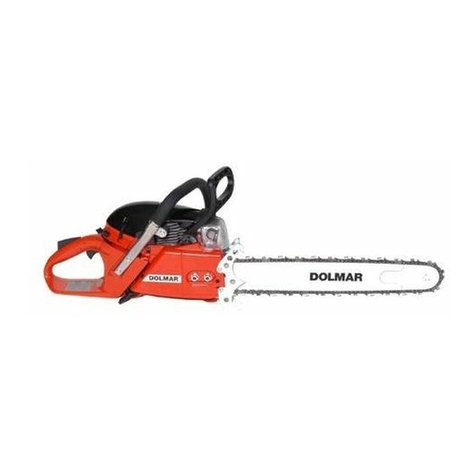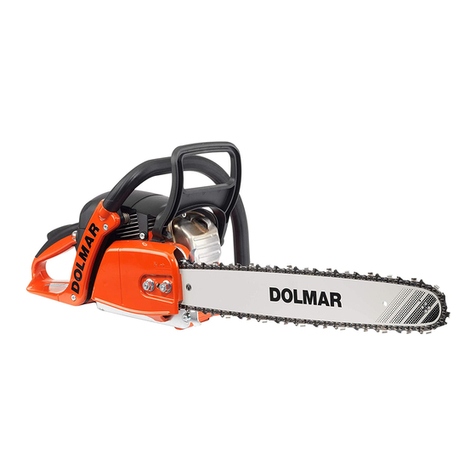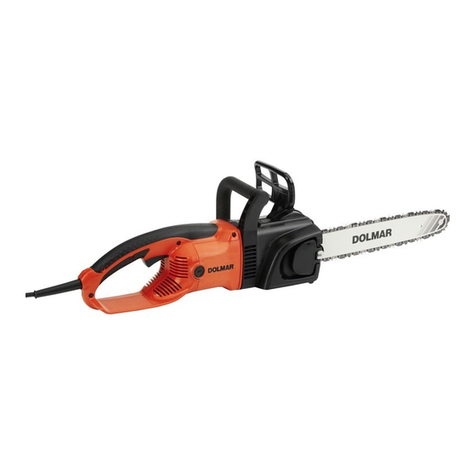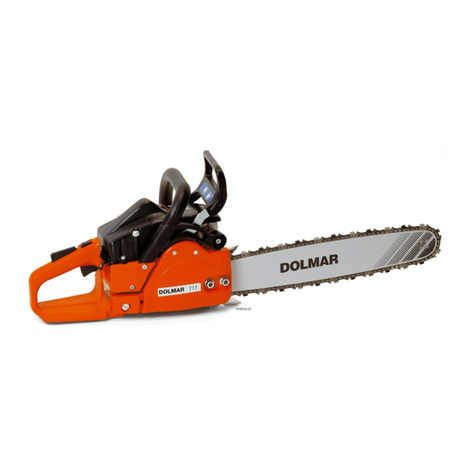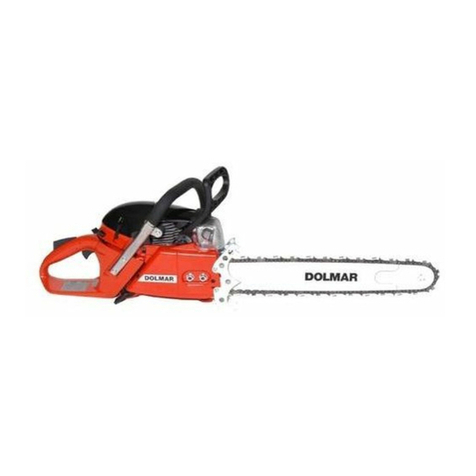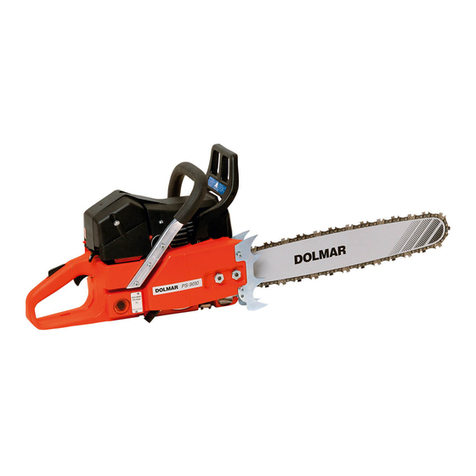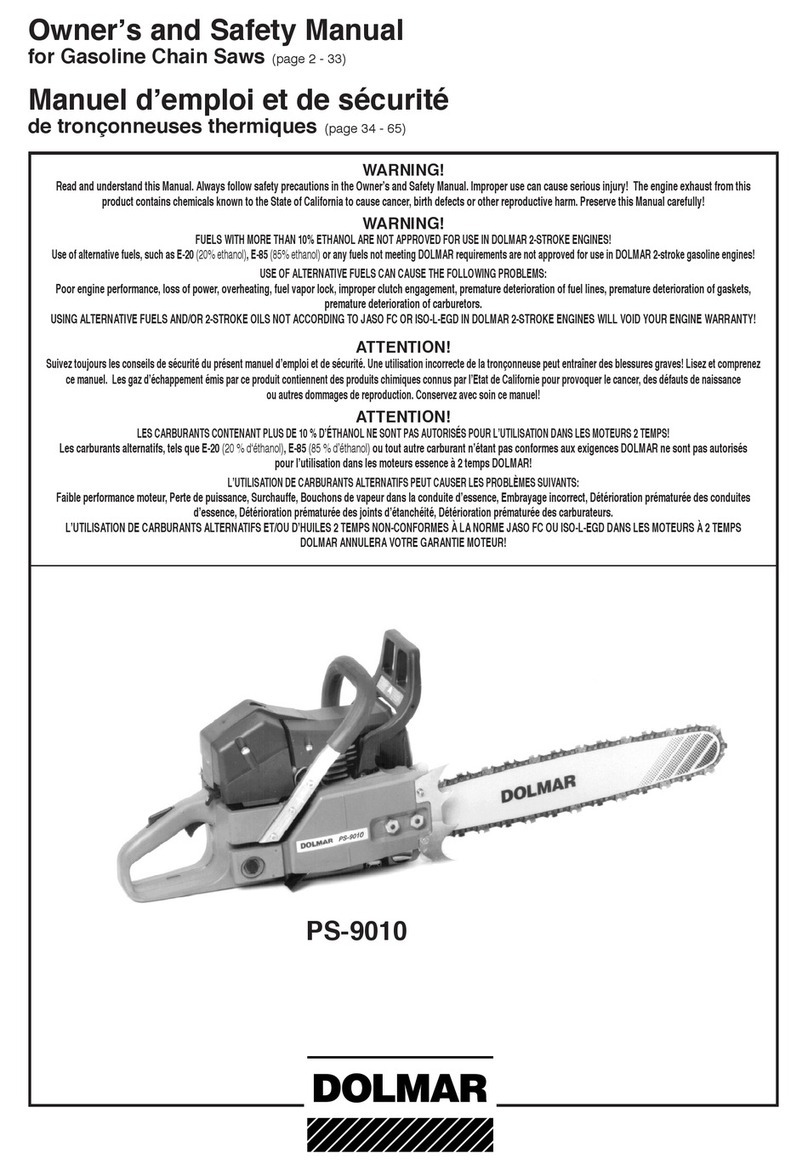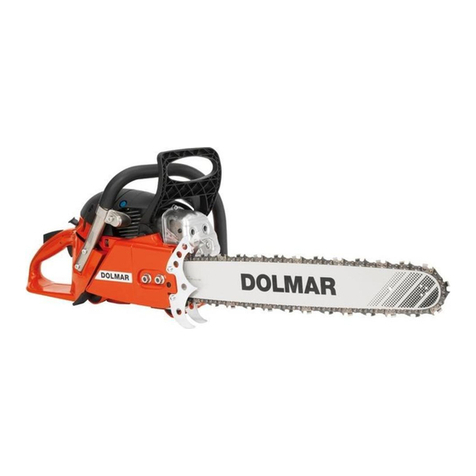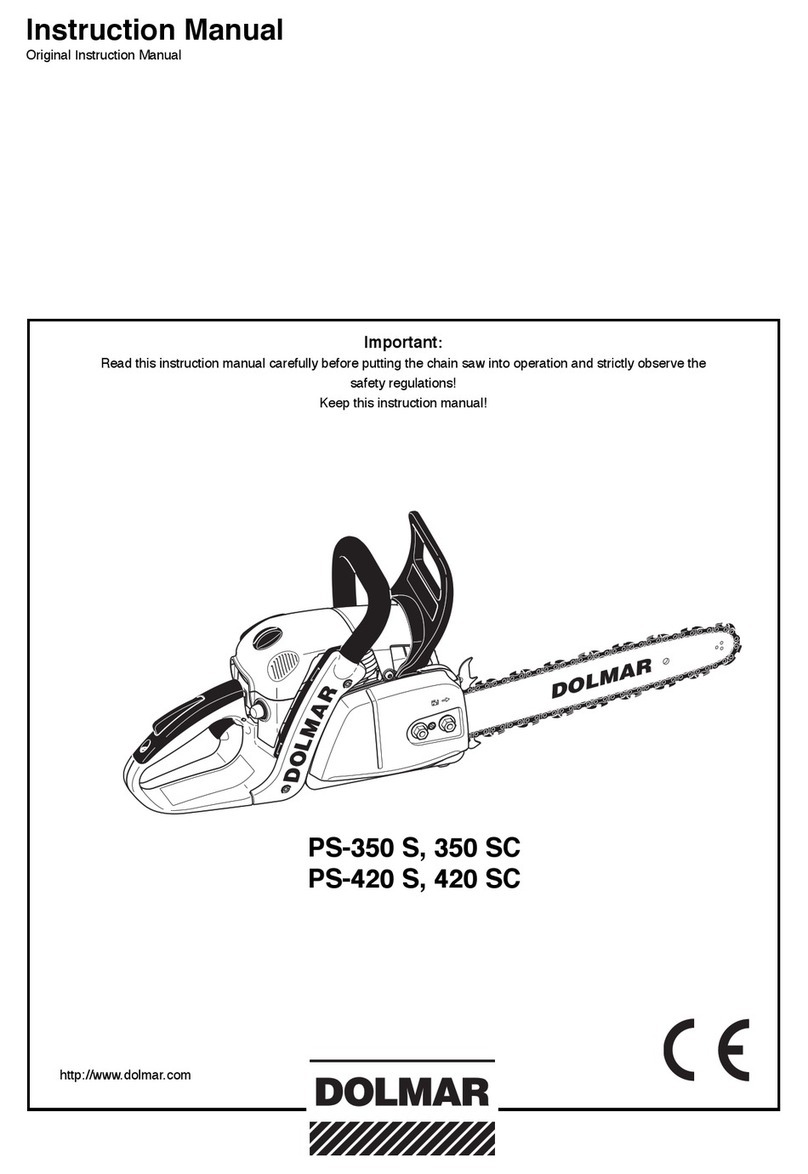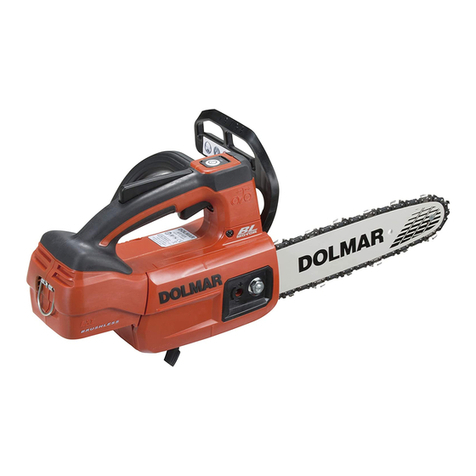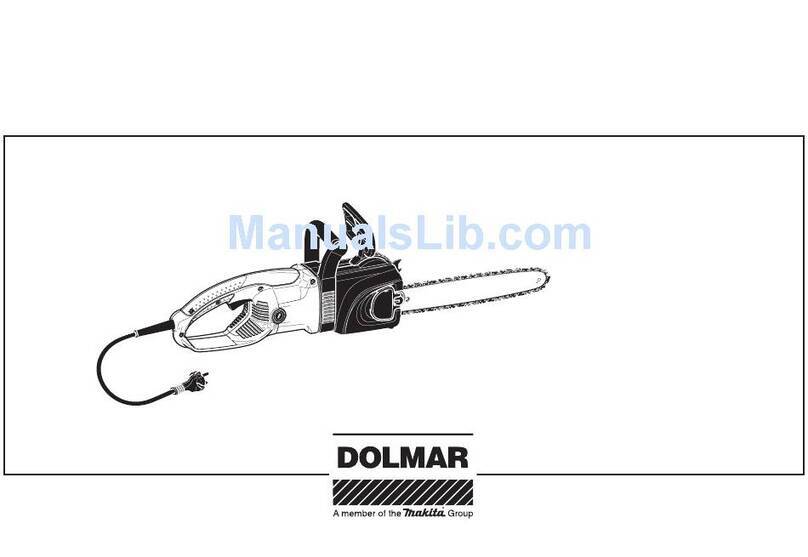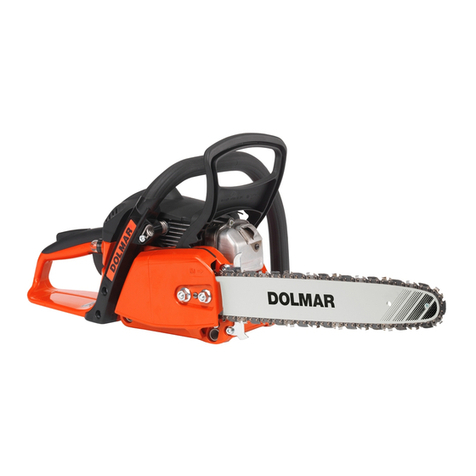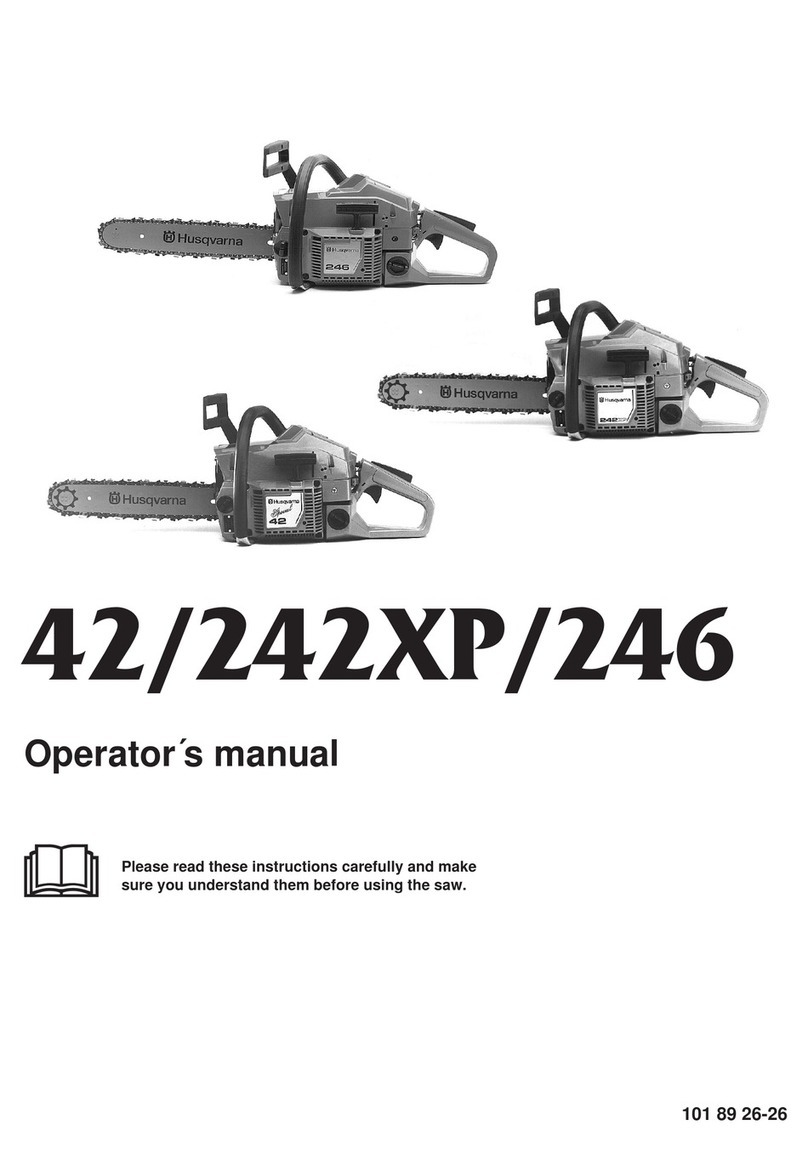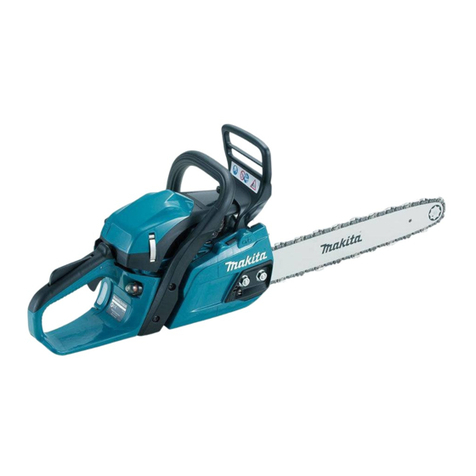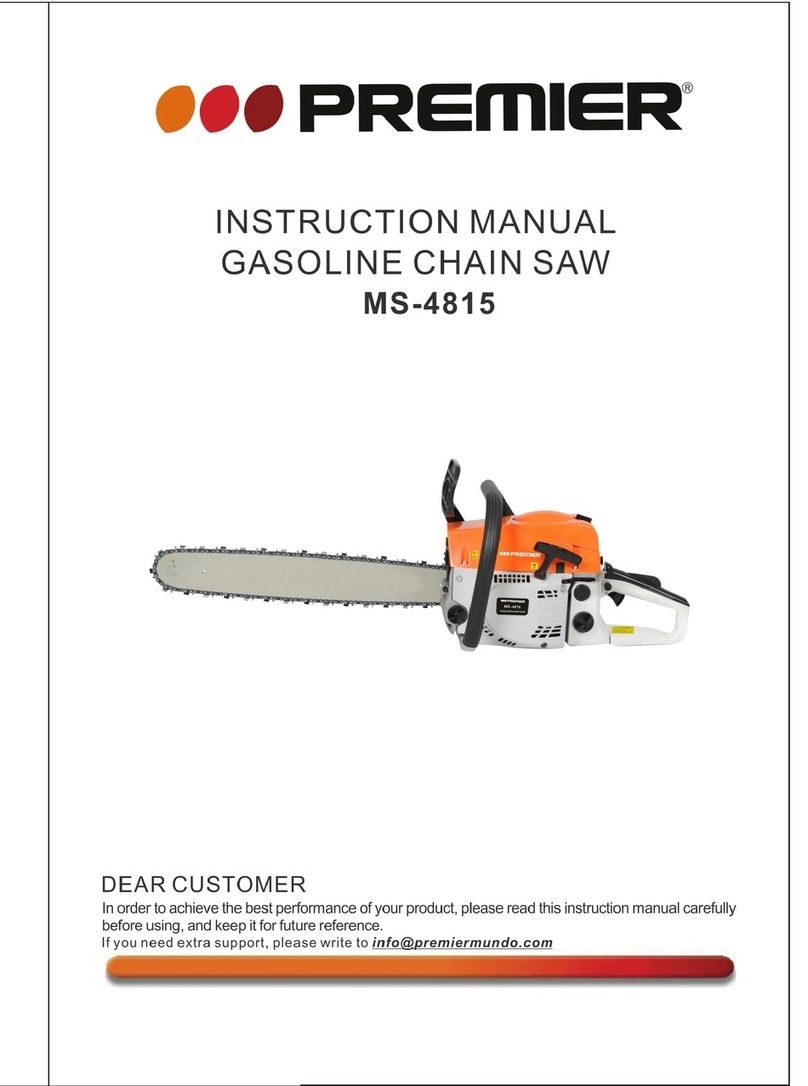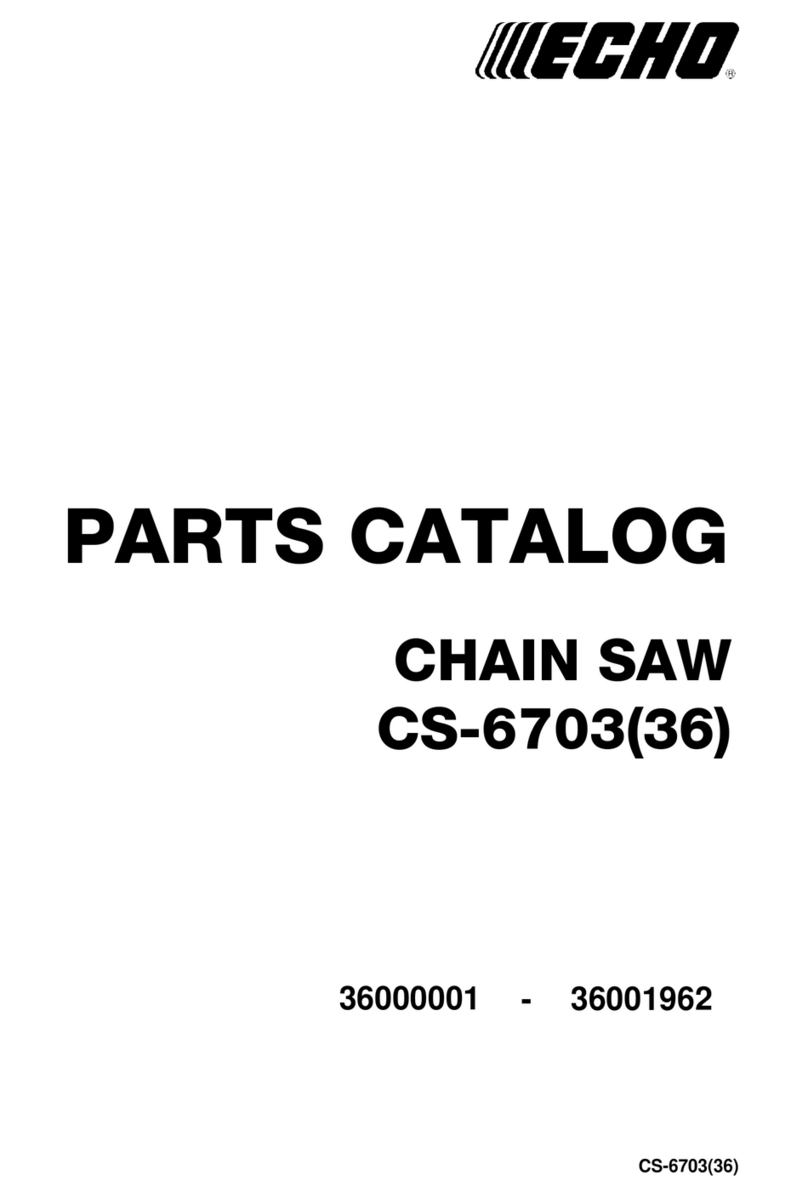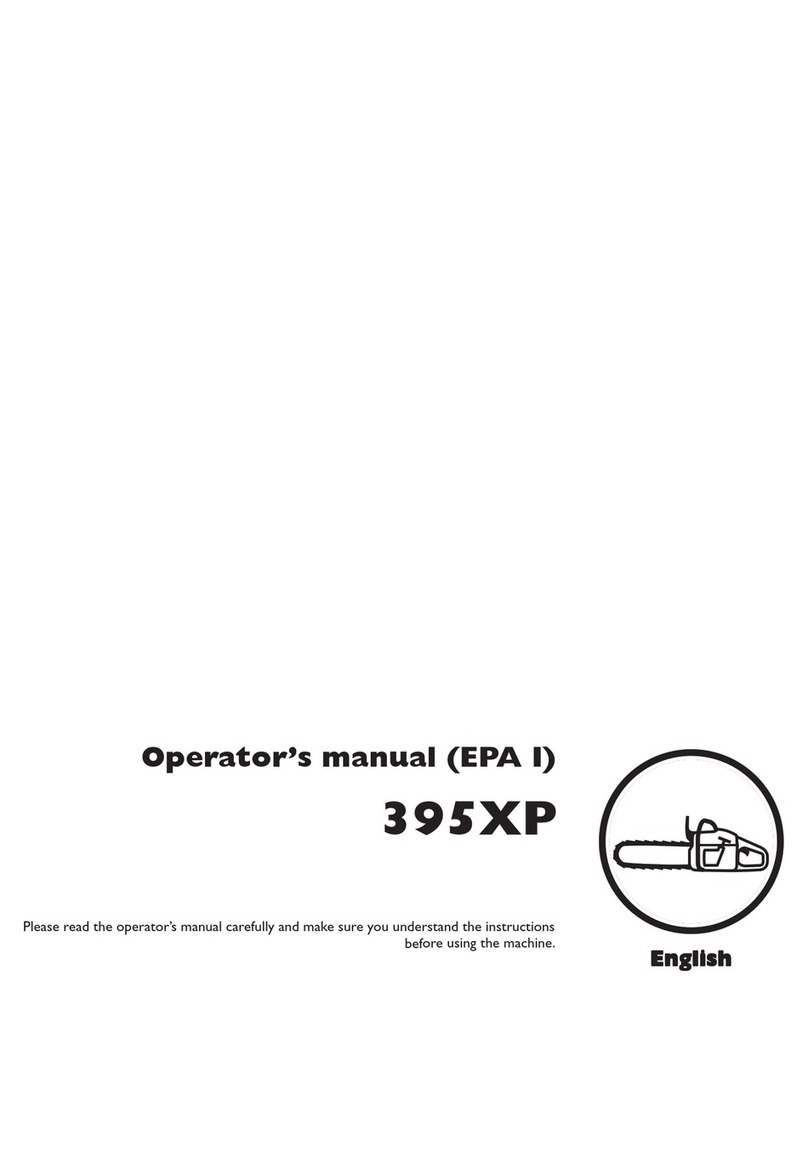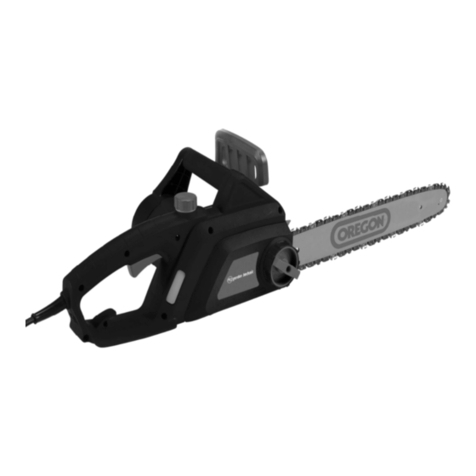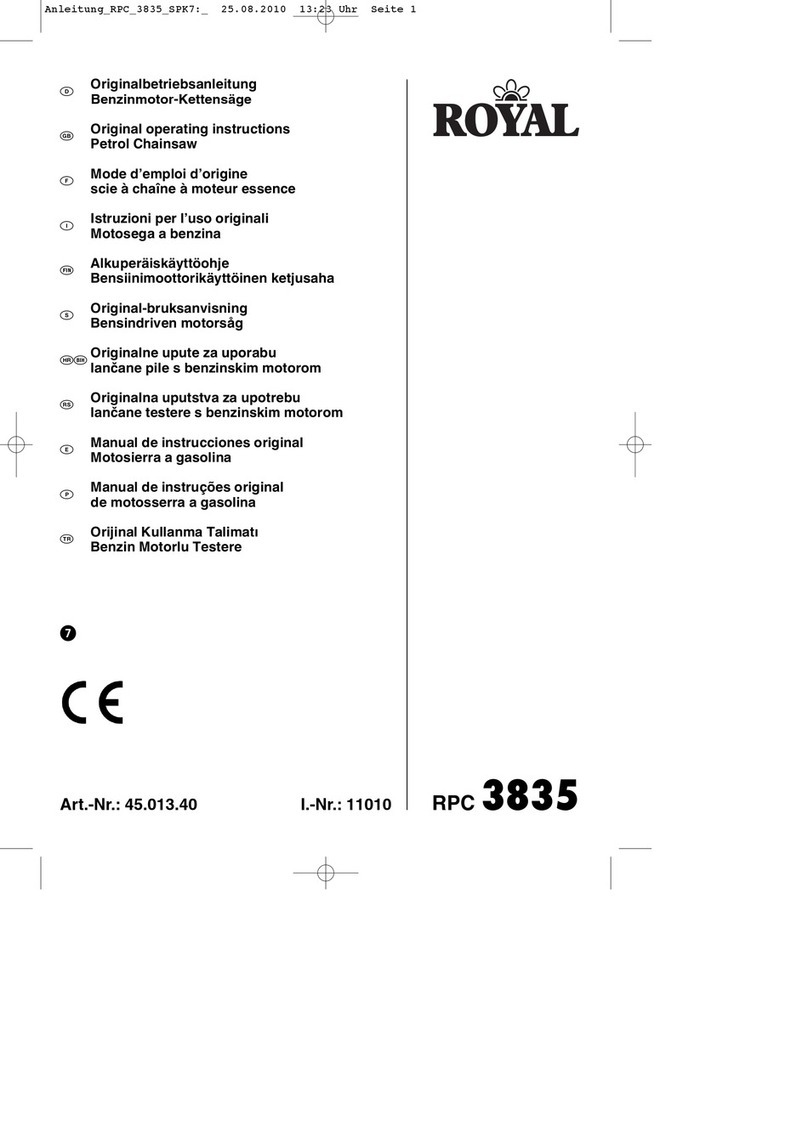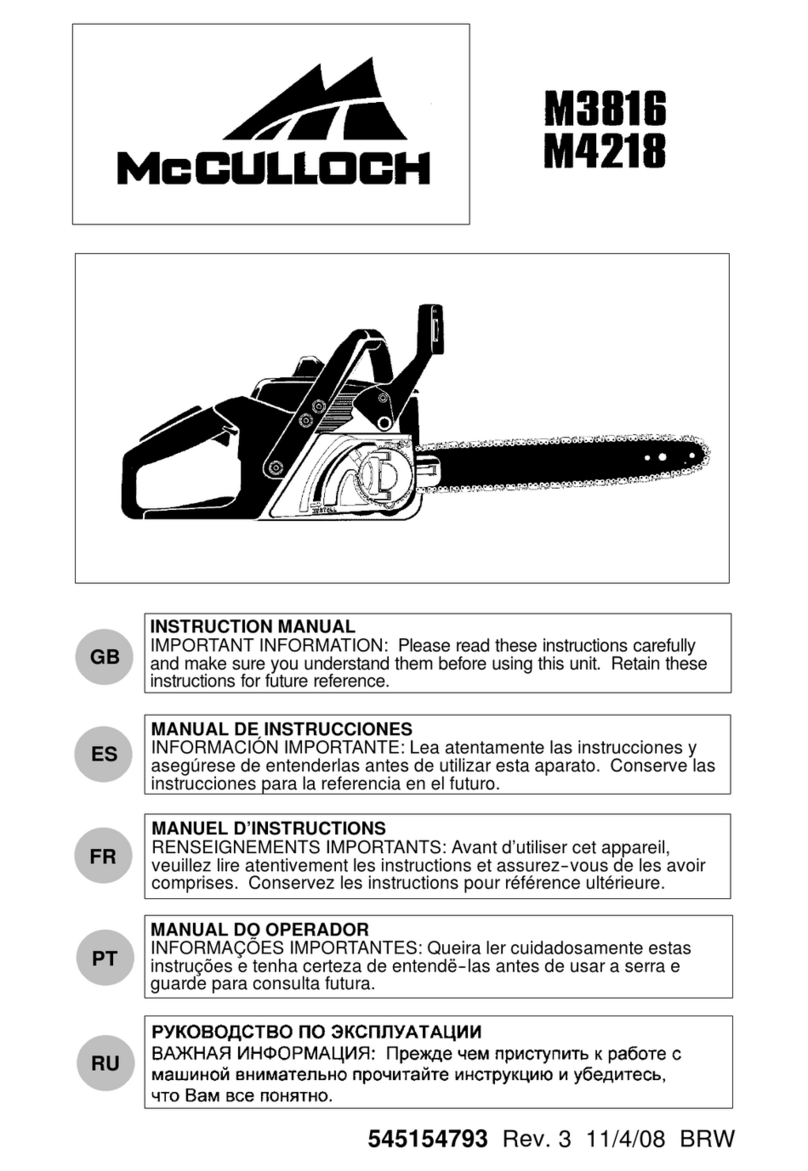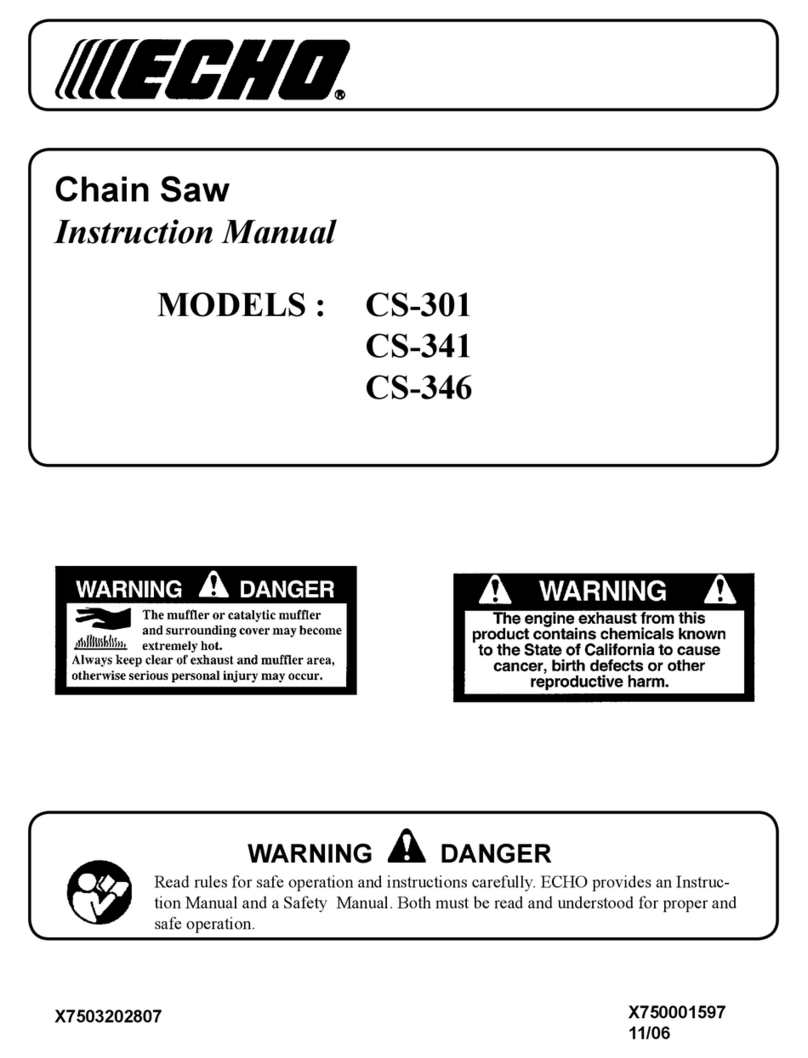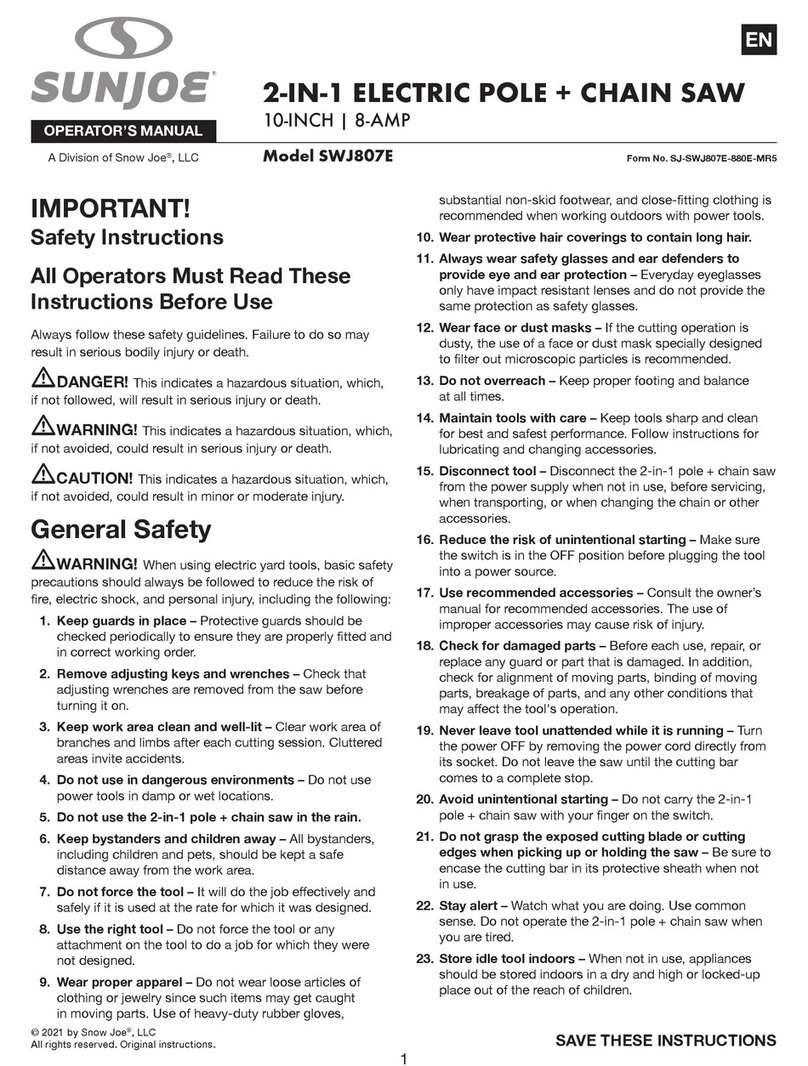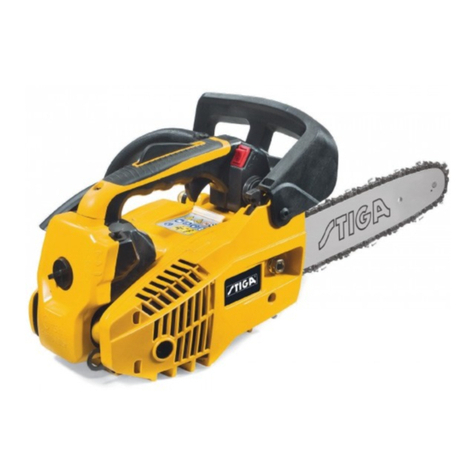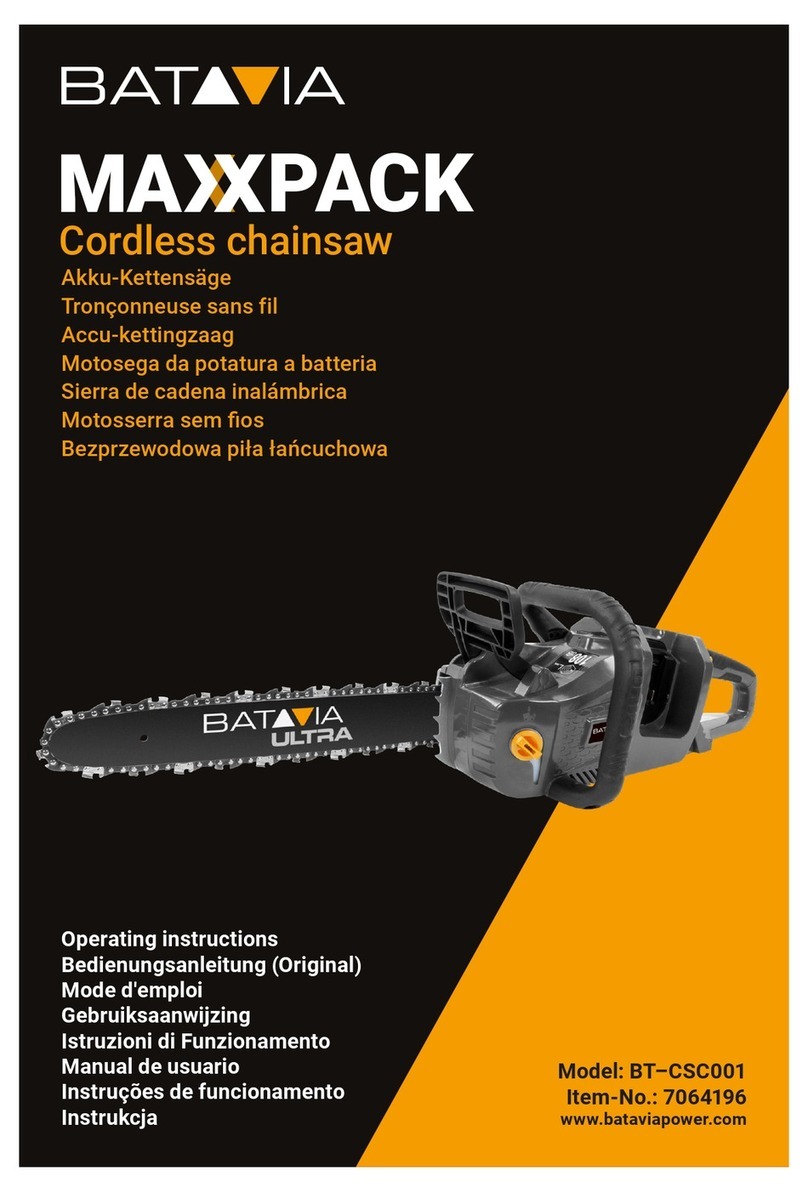10
towards the operator. Pinching the saw chain along
the top of the guide bar may push the guide bar rapidly
back towards the operator.
Either of these reactions may cause you to lose
control of the saw which could result in serious
personal injury. Do not rely exclusively upon the safety
devices built into your saw. As a chain saw user, you
should take several steps to keep your cutting jobs
free from accident or injury.
Kickback is the result of tool misuse and/or incorrect
operating procedures or conditions and can be
avoided by taking proper precautions as given below:
-Maintain a firm grip, with thumbs and fingers
encircling the chain saw handles, with both
hands on the saw and position your body and
arm to allow you to resist kickback forces.
Kickback forces can be controlled by the operator, if
proper precautions are taken. Do not let go of the
chain saw. (Fig. 1)
-Do not overreach and do not cut above shoulder
height. This helps prevent unintended tip contact
and enables better control of the chain saw in
unexpected situations.
-Only use replacement bars and chains specified
by the manufacturer. Incorrect replacement bars
and chains may cause chain breakage and/or
kickback.
-Follow the manufacturer’s sharpening and
maintenance instructions for the saw chain.
Decreasing the depth gauge height can lead to
increased kickback.
ADDITIONAL SAFETY RULES
1. Read the instruction manual in order to familiarize
yourself with operation of the chain saw.
2. Before using the chain saw for the first time, arrange
to have instruction in its operation. If this is not
possible, at least practice cutting round timber on a
trestle before beginning work.
3. The chain saw must not be used by children or young
persons under 18 years of age. Young persons over
16 years of age may be exempted from this restriction
if they are undergoing training under the supervision
of an expert.
4. Working with the chain saw requires a high level of
concentration. Do not work with the saw if you are not
feeling fit and well. Carry out all work calmly and
carefully.
5. Never work under the influence of alcohol, drugs or
medication.
Proper use
1. The chain saw is intended solely for cutting wood. Do
not use it for example to cut plastic or porous
concrete.
2. Only use the chain saw for operations described in
this instruction manual. Do not, for example, use it to
trim hedges or for similar purposes.
3. The chain saw must not be used for forestry work, i.e.
for felling and limbing standing timber. The chain saw
cable does not provide the operator with the mobility
and safety required for such work.
4. The chain saw is not intended for commercial use.
5. Do not overload the chain saw.
Personal protective equipment
1. Clothing must be close-fitting, but must not obstruct
mobility.
2. Wear the following protective clothing during work:
• A tested safety helmet, if a hazard is presented by
falling branches or similar;
• A face mask or goggles;
• Suitable ear protection (ear muffs, custom or
mouldable ear plugs). Octave brand analysis upon
request.
• Firm leather safety gloves;
• Long trousers manufactured from strong fabric;
• Protective dungarees of cut-resistant fabric;
• Safety shoes or boots with non-slip soles, steel toes,
and cut-resistant fabric lining;
• A breathing mask, when carrying out work which
produces dust (e.g. sawing dry wood).
Protection against electric shock
The chain saw must not be used in wet weather
or damp environments, as the electric motor is
not waterproof.
1. Only plug the saw into sockets in tested electrical
circuits. Check that the system voltage matches that
on the rating plate. Ensure that a 16 A line fuse is
fitted. Saws used in the open air must be connected to
a residual current-operated circuit-breaker with an
operating current no higher than 30 mA.
Should the connecting cable be damaged,
withdraw the mains plug immediately.
Safe working practices
1. Before starting work, check that the chain saw is in
proper working order and that its condition complies
with the safety regulations. Check in particular that:
• The chain brake is working properly;
• The run-down brake is working properly;
• The bar and the sprocket cover are fitted correctly;
• The chain has been sharpened and tensioned in
accordance with the regulations;
• The mains cable and mains plug are undamaged;
Refer to the “CHECKS” section.
2. Always ensure in particular that the extension cable
used is of adequate cross-section (see
“SPECIFICATIONS”). When using a cable reel, wind
the cable completely off the reel. When using the saw
in the open air, ensure that the cable employed is
intended for open-air use and is rated accordingly.
3. Keep the cord away from the cutting area and to
position cord so that it will not be caught on branches,
and the like, during cutting.
4. Do not operate the chain saw in the vicinity of
flammable dust or gases, as the motor generates
sparks and presents a risk of explosion.
5. Work only on firm ground and with a good footing. Pay
particular attention to obstacles (e.g. the cable) in the
working area. Take particular care where moisture,
ice, snow, freshly cut wood or bark may make
